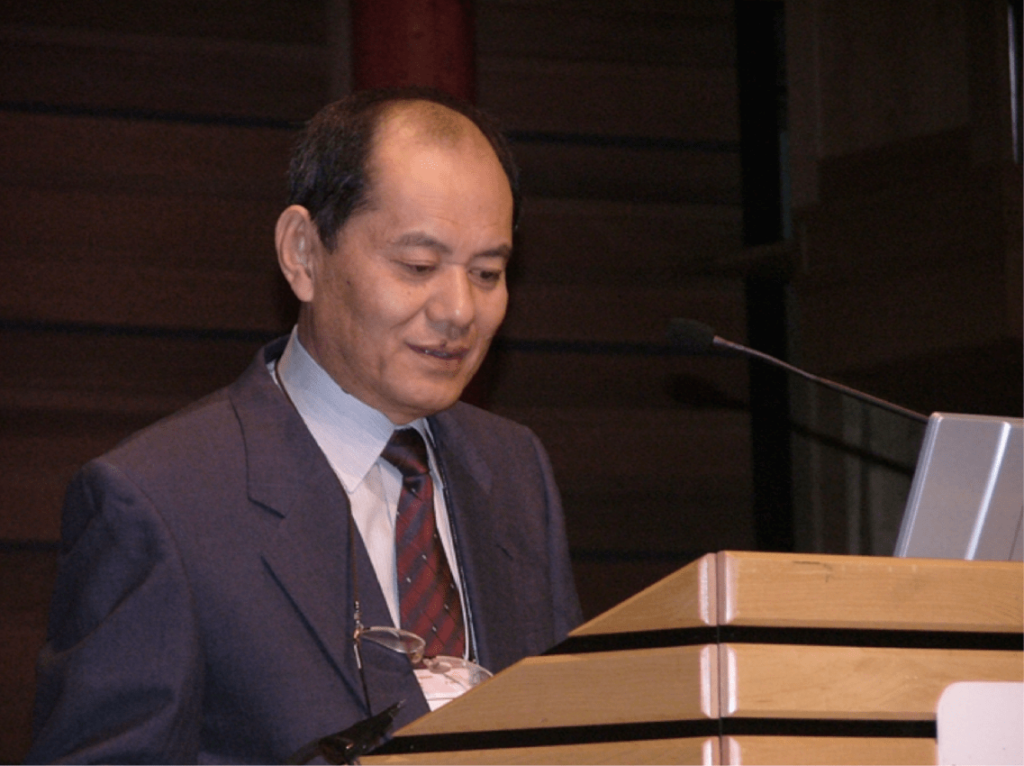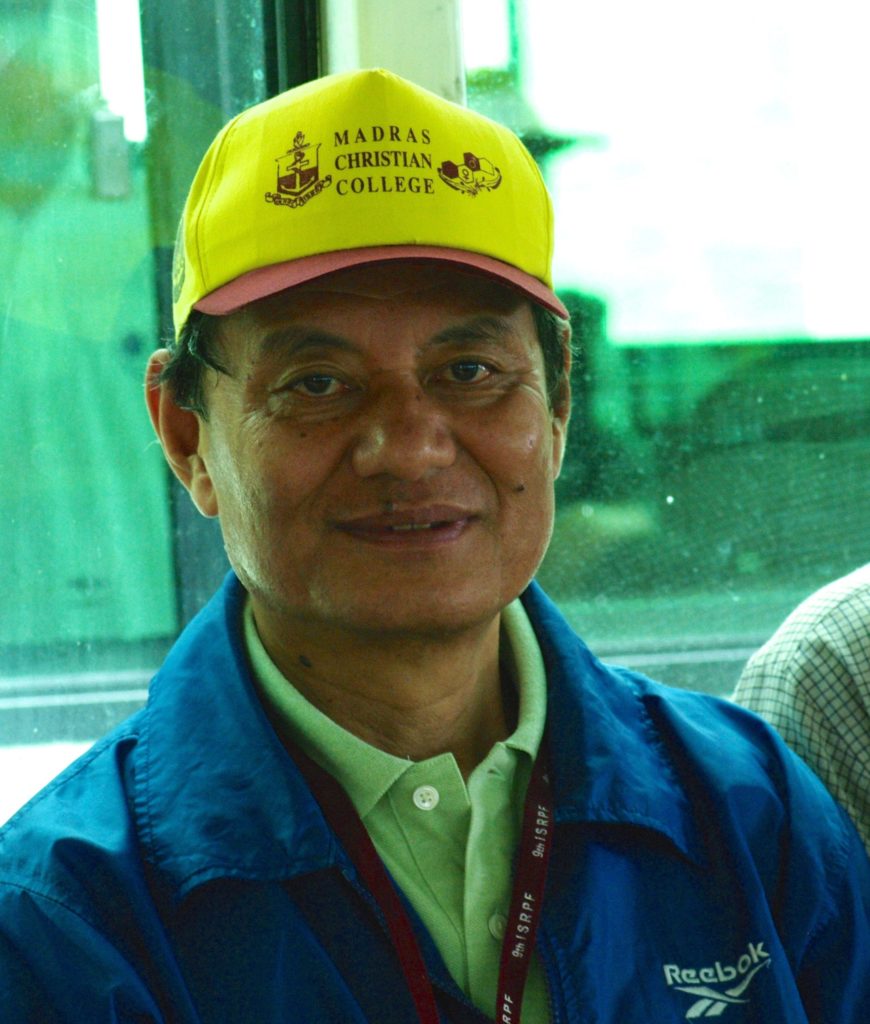Yoshitaka Nagahama
Richard R. Peter lectureship 2008


Professor Nagahama obtained his Bachelor’s (1966) and Master’s (1968) degrees and his doctorate (1971) from the Faculty of Fisheries, Hokkaido University, Japan. He then undertook postdoctoral training with Professor Howard Bern at the University of California, Berkeley (1972-74, 1977) and with Professor William Hoar at the University of British Columbia, Vancouver (1974-77) before being appointed in 1977 as Associate Professor at the National Institute for Basic Biology (NIBB) at the National Institute of Natural Sciences, Okazaki, Japan. He was promoted to Professor in 1986. Professor Nagahama has served successively as Chairman of the Department of Developmental Biology and Vice Director of his institute. He is currently Professor at Ehime University, Matsuyama, Japan. He is also Professor Emeritus at National Institute for Basic Biology and at The Graduate University for Advanced Studies, Okazaki, Japan.
Professor Nagahama has been an eminent leader of reproductive endocrinology in vertebrates, mainly fish. He was quick to recognize the power of molecular biology techniques, and his laboratory was one of the first non-mammalian laboratories to focus on molecular endocrinology. Professor Nagahama’s main research interests focus on determining the molecular and cellular events related to sex determination/differentiation, sexual plasticity and gametogenesis. The major contributions of his laboratory in gametogenesis include the first identification of spermatogenesis-inducing hormone and oocyte/sperm maturation-inducing hormones using fishes. The achievement of complete spermatogenesis from spermatogonia to mature sperm under in vitro organ culture conditions provided extensive insights to understand entire events of spermatogenesis for the first time. These hormones have been used for artificial induction of gamete maturation and spawning of some of commercially important fish such as Japanese eel in captivity. More recently, his laboratory expanded their work to invertebrates by the first identification of gonadotropin in invertebrates, gonad-stimulating substance of starfish, to be a member of relaxin family.
Professor Nagahama’s laboratory made a major international breakthrough in identifying DMY as the sex-determining gene in the Japanese medaka, the second gene of this kind in any vertebrates – as the counterpart of SRY in mammals. This work has provided a paradigm shift in the field of sex determination, and is being actively followed up in many laboratories around the world. More recently, his laboratory demonstrated for the first time in any gonochoristic vertebrates that two gonochoristic teleost fish, tilapia ad medaka retain their sexual plasticity even in the adult stage and that estrogens are vital to the maintenance of female phenotype in the gonochoristic species. Professor Nagahama’s discovery of sex-determining gene in fish and his finding on the remarkable sexual plasticity extending even to adulthood in fish provide an important clue as to the evolution and mechanisms of sex of fish as well as vertebrates as a whole.
Professor Nagahama is widely recognized internationally as one of the most preeminent scientists in the field of fish reproductive physiology and endocrinology. He has published more than 400 scientific papers, major book chapters and reviews. Numerous students and postdoctoral researchers from Asia, Europe and the Americas have received training in his laboratory. Professor Nagahama demonstrated unselfish service and leadership in advancing various areas of biosciences including reproductive biology by serving as Editor-in-Chief of Zoological Science and Executive Editor of Current Topics of Developmental Biology and Molecular Reproduction and Development, and also has had editorial responsibilities for more than 15 other journals including General and Comparative Endocrinology, Journal of Molecular Endocrinology and Molecular and Cellular Endocrinology. Professor Nagahama has received numerous awards and honors, including the Japan Society of Fisheries Prize, the Grace Pickford Medal of the International Federation of Comparative Endocrinological Societies, the Inoue Science Foundation Award, the Prize of the Zoological Society of Japan, the Howard A. Bern Lecture Award of the Society for Integrative and Comparative Endocrinology, and the Richard E. Peter Lecture Award from International Symposium on Fish Endocrinology. He has given numerous invited plenary or state-of-the-art lectures at a variety of international conferences. Professor Nagahama was President of the International Federation of Comparative Endocrinological Societies and the Zoological Society of Japan, and is currently Vice President of the International Society of Zoological Sciences.
Major publications by Professor Yoshitaka Nagahama
- Nagahama, Y. (1983). The functional morphology of teleost gonads. In “Fish Physiology” (W.S. Hoar, D.J. Randall and E.M. Donaldson, eds.), Vol. IXA, pp. 223-275. Academic Press, New York.
- Nagahama, Y. and Adachi, S. (1985). Identification of a maturation-inducing steroid in a teleost, the amago salmon (Oncorhynchus rhodurus). Dev. Biol. 109, 428-435.
- Suzuki, K., Kawauchi, H. and Nagahama, Y. (1988). Isolation and characterization of two distinct gonadotropins from chum salmon pituitary glands. Gen. Comp. Endocrinol. 71, 292-301.
- Yoshikuni, M., Ishikawa, K., Isobe, M., Goto, T. and Nagahama, Y. (1988). Characterization of 1-methyladenine binding in starfish oocyte cortices. Proc. Natl. Acad. Sci. USA 85, 1708-1711.
- Miura, T., Yamauchi, K., Takahashi, H. and Nagahama, Y. (1991). Hormonal induction of all stages of spermatogenesis in vitro in the male Japanese eel (Anguilla japonica). Proc. Natl. Acad. Sci. USA 88, 5774-5778.
- Yamashita, M., Kajiura, H., Tanaka, T., Onoe, S. and Nagahama, Y. (1995). Molecular mechanisms of the activation of maturation-promoting factor during goldfish oocyte maturation. Dev. Biol. 168, 62-75.
- Tokumoto, T., Yamashita, M., Tokumoto, M., Katsu, Y. Kajiura, H. and Nagahama, Y. (1997). Initiation of cyclin B degradation by the 26S proteasome upon egg activation. J. Cell Biol. 22, 1313-1322.
- Guan, G., Todo, T., Tanaka, M., Young, G. and Nagahama, Y. (2000). Isoleucine-15 of rainbow trout carbonyl reductase-like 20b-hydroxysteroid dehydrogenase is critical for coenzyme (NADPH) binding. Proc. Natl. Acad. Sci. USA 97, 3079-3083.
- Tanaka, M., Kinosita, M. and Nagahama, Y. (2001). Establishment of medaka (Oryzias latipes) transgenic lines with the expression of GFP fluorescence exclusively in germline cells: a useful model to monitor germline cells in a live vertebrate. Proc. Natl. Acad. Sci. USA 98, 2544-2549.
- Matsuda, M., Nagahama, Y.**, Shinomiya, A., Sato, T., Matsuda, C., Kobayashi, T., Morrey, C.E., Shibata, N., Asakawa, S., Shimizu, N., Hori, H., Hamaguchi, S. and Sakaizumi, M. (2002). DMY is a Y-specific DM-domain gene required for male development in the medaka fish. Nature 417, 559-563. **Corresponding author.
- Devlin, R.H. and Nagahama, Y. (2002). Sex determination and sex differentiation in fish. Aquaculture 208, 191-366.
- Tokumoto, T., Tokumoto, M., Horiguchi, R., Ishikawa, K. and Nagahama, Y. (2004). Diethylstilbestrol induces fish oocyte maturation. Proc. Natl. Acad. Sci. USA 101, 3686-3690.
- Matsuda, M., Shinomiya, S., Kinoshita, M., Suzuki, A., Kobayashi, T., Paul-Prasanth, B., Lau, E.L., Hamaguchi, S., Sakaizumi, M. and Nagahama, Y. (2007). DMY induces male development in XX medaka fish. Natl. Acad. Sci. USA 104, 3865-3870.
- Wang, D.S., Kobayashi, T., Zhou, L.Y., Paul-Prasanth, B., Ijiri, S., Sakai, F., Okubo, K., Morohashi, K. and Nagahama, Y. (2007). Foxl2 up-regulates aromatase gene transcription female-specifically by binding to the promoter as well as interacting with Ad4BP/SF-1. Mol. Endocrinol. 21, 712-725.
- Nagahama, Y. and Yamashita, M. (2008). Regulation of oocyte maturation in fish. Dev. Growth Differ. 50 Suppl 1:S195-219.
- Mita, M., Yoshikuni, M., Ohno, K., Shibata, Y., Paul-Prasanth, B., Pitchayawasin, S., Isobe, M. and Nagahama, Y. (2008). A relaxin-like peptide purified from radial nerves induces oocyte maturation and ovulation in the starfish, Asterina pectinifera. Proc. Natl. Acad. Sci. USA 106, 9507-9512.
- Kobayashi, Y., Nakamura, M., Sunobe, T., Usami, T., Kobayashi, T., Manabe, H., Paul-Prasanth, B., Suzuki, N. and Nagahama, Y. (2009). Sex-change in the gobiid fish is mediated through rapid switching of gonadotropin receptors from ovarian to testicular portion or vice-versa. Endocrinology 150, 1503-1511.
- Wang, D.S., Zhou, L.Y., Kobayashi, T., Matsuda, M., Shibata, Y., Sakai, F. and Nagahama, Y. (2010). Doublesex- and Mab-3-Related Transcription Factor-1 repression of aromatase transcription, a possible mechanism favoring the male pathway in tilapia. Endocrinology 151, 1331-1340.
- Charkraborty, T., Shibata, Y., Zhou, L.Y., Katsu, Y., Iguchi, T. and Nagahama, Y. (2011). Differential expression of three estrogen receptor subtype mRNAs in gonads and liver from embryos to adults of the medaka, Oryzias latipes. Mol. Cell. Endocrinol. 333, 47-54.
- Paul-Prasanth, B., Bhandari, R.K., Kobayashi, T., Horiguchi, R., Kobayashi, Y., Nakamoto, M., Shibata, Y., Sakai, F., Nakamura, M. and Nagahama, Y. (2013). Estrogen oversees the maintenance of the female genetic program in terminally differentiated gonochorists. Sci. Rep. 3, 2862.


